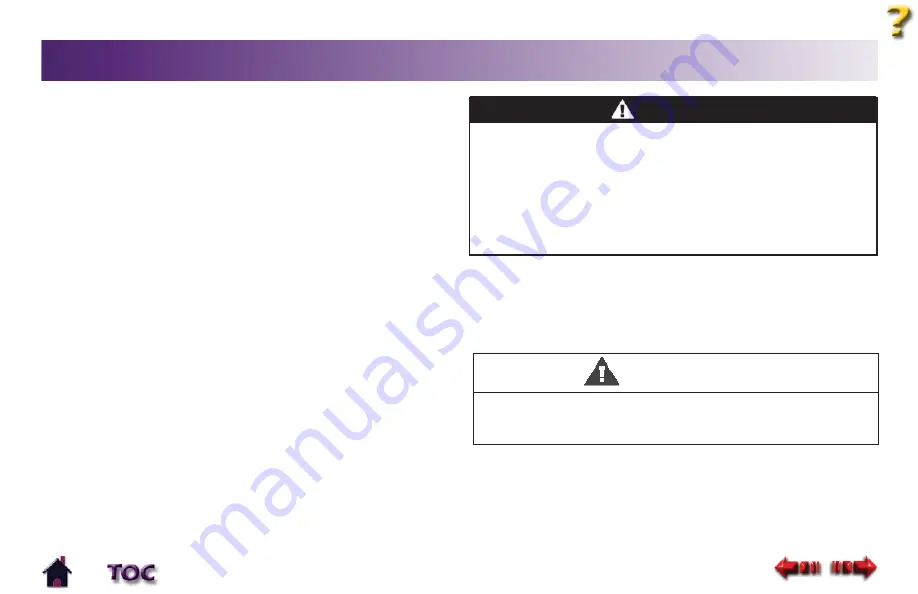
11
Vectra Genisys® Laser Module
TABLE OF CONTENTS
Vectra Genisys® Laser Module
ABOUT LASER LIGHT THERAPY
• over or near bone growth centers until bone growth is
complete.
• over the thoracic area if the patient is using a cardiac
pacemaker.
• over or applied to the eye.
• on ischemic tissues in individuals with vascular disease where
the blood supply would be unable to follow the increase in
metabolic demand and tissue necrosis might result.
Additional Precautions
Additional precaution should be used when the laser is used on
patients with the following conditions:
• Over an area of the spinal cord following a laminectomy, i.e.,
when major covering tissues have been removed.
• Over anesthetic areas.
• On patients with hemorrhagic diatheses.
Preventing Adverse Effects
Perform the following procedures to avoid the negative effects
of laser light therapy.
Patient Susceptibility
Be sure to inspect the treatment area during and following
treatment, and discontinue if an adverse reaction does occur.
Output Power
Higher output levels have a greater potential for patient
discomfort. Choose a lower dosage to reduce output or select a
pulsed duty cycle to decrease patient discomfort.
DANGER
Patients with an implanted neurostimulation device must not be treated
with or be in close proximity to any shortwave diathermy, microwave
diathermy, therapeutic laser diathermy or laser diathermy anywhere on
their body. Energy from diathermy (shortwave, microwave, ultrasound,
and laser) can be transferred through the implanted neurostimulation
system, can cause tissue damage and can result in severe injury or death.
Injury, damage, or death can occur during diathermy therapy even if the
implanted neurostimulation system is turned "off."
Some patients are more sensitive to laser output (i.e., patients taking
medications that increase sensitivity to light) and may experience a
reaction similar to a heat rash.
WARNING















































